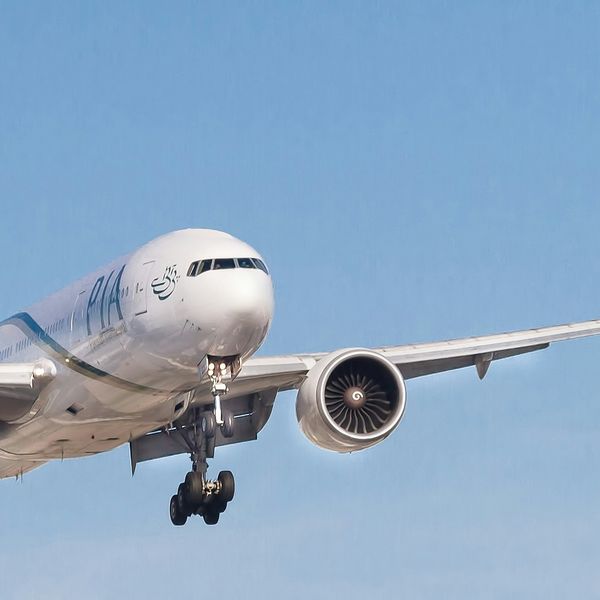Saudi Arabia’s real estate boom: $5 billion investments fuel growth in key sectors
Massive infrastructure projects and government-backed initiatives drive the kingdom’s real estate market toward unprecedented expansion.

Rana Tabbara
Senior Business Producer
Rana Tabbara is a UAE-based reporter and content creator known for dynamic storytelling, impactful reporting, and high-profile interviews. She interviewed leaders including the UAE Minister of Energy, the Australian Prime Minister, the Saudi Minister of Tourism, the Armenian Minister of Economy, and CEOs of major companies. Rana covered big events like the World Government Summit, LEAP, Cityscape KSA, IDEX, among others. Her previous experiences include The New York Times, CNN Business Arabic, and L'Orient-Le Jour.

KSA's hospitality sector is thriving, with occupancy and daily rates rising as the kingdom prepares for major global events like the 2030 Expo and FIFA World Cup 2034.
- Over 27,500 residential units were delivered in Riyadh and Jeddah in H1 2024, with significant growth expected by year-end.
- Demand for Grade A office spaces in Riyadh surged, with rents increasing 19% year-on-year, highlighting strong interest in high-quality properties.
Saudi Arabia's ongoing investments in infrastructure and giga projects are fueling significant growth in the kingdom’s real estate market. In the first half of 2024, 27,500 residential units were delivered in Riyadh and Jeddah, increasing the total supply to approximately 1.46 million units in the capital and 891,000 in Jeddah. Another 16,000 units are expected to be added in both cities by the end of the year.
According to JLL’s latest KSA Real Estate Market Dynamics Report, the residential and hospitality sectors were the strongest performers in H1 2024. The government’s efforts to boost home ownership, along with the expansion of entertainment options and tourist visas, have played a key role in this growth.
Riyadh saw residential sale prices rise by 10% year-on-year, while rents increased by 9%. Jeddah's growth was more moderate, with sale prices up by 5% and rents growing by 4%.
The report also highlighted the shift in residential development within the Dammam Metropolitan Area (DMA), where Khobar led the activity. Sale prices in the region have remained stable, while rents experienced a 4% annual increase.
Saudi Arabia’s hospitality sector also saw impressive growth in H1 2024. As the country prepares to welcome 150 million visitors by 2030, the average occupancy rate increased by 1% in the first half of the year, and the average daily rate (ADR) rose by 7%, resulting in an 8% increase in revenue per available room (RevPAR).
The Holy Cities of Makkah and Medina recorded notable year-on-year RevPAR growth, with increases of 4% and 15%, respectively. Riyadh also saw its ADR rise by 25%, driven by an increase in corporate visitation.
Saudi Arabia’s Vision 2030 plan and its $800 billion investment in tourism over the next decade are set to further support the hospitality sector, with major events like the Asian Cup 2027, Asian Winter Games 2029, Expo 2030, and FIFA World Cup 2034 on the horizon.
The introduction of a star rating system aims to enhance quality standards in the tourism industry, ensuring long-term market improvement.
The office market remained competitive, with Riyadh adding 52,000 sq m of office space, bringing its total to 5.2 million sq m. Jeddah’s office stock held steady at 1.21 million sq m.
The demand for high-quality, Grade A office spaces continues to rise, particularly in Riyadh's northern region, leading to a 19% year-on-year increase in Grade A rents in the capital.
In the retail sector, activity in Riyadh remained stable, with 77,000 sq m of new retail space expected later in 2024. Jeddah expanded its retail offering by adding 106,000 sq m of space at Souq 7, bringing its total to 2.16 million sq m.
However, rents for regional malls in Jeddah saw a slight decline of 4% year-on-year, while super regional malls experienced a 4% increase.
Country Head for KSA at JLL Saud Alsulaimani highlighted the positive trajectory of Saudi Arabia's real estate market, driven by population growth, infrastructure development, and government-backed initiatives.
He emphasized that the kingdom is on track to achieve its Vision 2030 goals, with strategic collaboration between the government and private sectors playing a crucial role in sustaining long-term growth and resilience in the real estate industry.







Comments
See what people are discussing